�
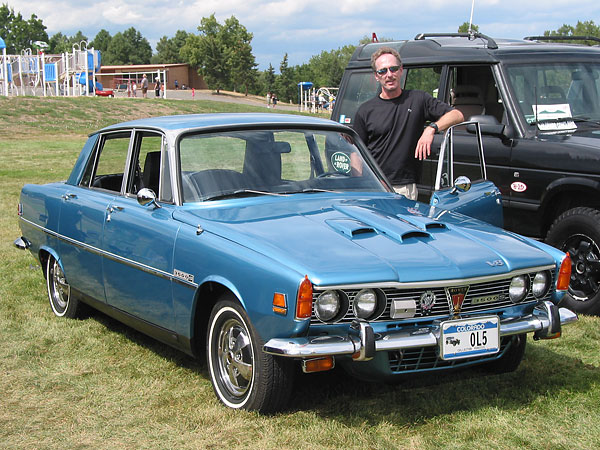
�
Lance LaCerte's 1970 Rover 3500S (P6B)
� as published in British V8 Newsletter, Volume XV Issue 3, December 2007�� Owner: Lance LaCerte
� City: Denver, CO
� Model: 1970 Rover 3500S ("P6B")
� Engine: 3.5L Rover V8
�
�
| Engine: | �3.5L Rover V8. These engines were originally built with 10.5:1 �
compression ratio, and were rated at 184hp at 5200 rpm, 226ft.lb.�
of torque at 3000rpm. Lance's engine was rebuilt in August 2007 �
by Ted Ax. A later-model Rover SD1 engine block was substituted, �
and neoprene seals were used in lieu of original rope-type seals. | �
| Induction: | �twin 1.75" bore SU "HS6" carburetors (stock). | �
| Ignition: | �Lucas distributor with condensor/points (stock). | �
| Cooling: | �re-cored radiator and mechanical fan. | �
| Exhaust: | �stock iron manifolds, single muffler. | �
| Transmission: | �Borg Warner 35 (3-speed automatic). | �
| Front Susp.: | �Rover's uniquely designed double-wishbone IFS, featuring �
telescoping shocks and horizontally-mounted coil springs! �
19mm hexagonal-section sway bar (stock). Adwest Varamatic �
power steering (stock). | �
| Rear Susp.: | �Rover's uniquely integraged "de Dion tube" suspension. �
Like all de Dion suspensions, the design features low unsprung �
weight because the differential and brakes are mounted to the �
chassis and connected to the wheels by u-jointed "half-shafts". �
The wheels are held parallel to each other by a rigid tube. �
Also, like many other de Dion suspension, coil springs with �
concentrically mounted telescopic shock absorbers are used. �
The rear suspension is located by trailing links and side-to-side �
displacement is restricted by a Watts link. However, Rover's �
apparently unique development over other de Dion suspensions is �
that the half-shafts don't feature slip-joints. Instead, the �
de Dion tube itself telescopes to accomodate body roll. | �
| Rear End: | �Rover differential, 3/08:1 gears (stock). | �
| Brakes: | �four-wheel disc brakes with Girling hydraulics and servo assist.�
Electrical pad-wear sensors. Rear discs are inboard-mounted. | �
| Sources: | �"All British Cars" in Vancouver Canada. | �
| Completion: | �August 2007. (135 miles driven, as of the Colorado Conclave in September.) | �
�
A few special notes about the Rover 3500 and 3500S models: �
�
Lance's car is one of only 2043 Rover 3500S cars built to North American specification.�
�
The Rover 3500S body is composed of non-structural steel panels; they can all be unbolted �
and removed from an underlying monocoque structure. When the body was originally being �
designed, Rover planned to install their own gas turbine engine. The unusual front �
suspension was developed to facilitate an extra-wide engine bay.�
�
The "Icelert" warning device (aka: "penguin detector") was factory-installed. It senses �
humidity and temperature, and warns as outside air temperatures drop.�
�
Princess Grace was driving a Rover 3500 when she lost control, wrecked, and died in Monoco. �
(She had apparently suffered a minor stroke while driving. Her daughter, Princess Stephanie, �
survived the accident. By all accounts the Rover 3500 was an exceptionally safe and �
"crashworthy" car by the standards of its day.)�
�
Look for Rover 3500s in many movies... especially as a police car! Remember that �
scene at the end of "Monty Python and the Holy Grail" when the police arrest King Aurthur �
and Sir Bedevere? They're also driven by futuristic police in the film "Gattaca" and by an �
evil henchman who chases Austin Powers in "The Spy Who Shagged Me".�
�
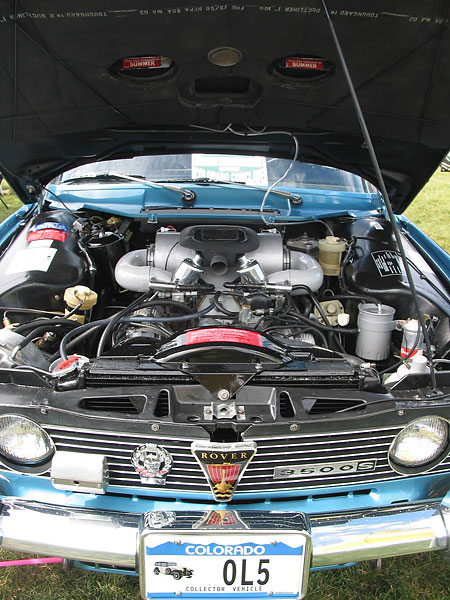
�
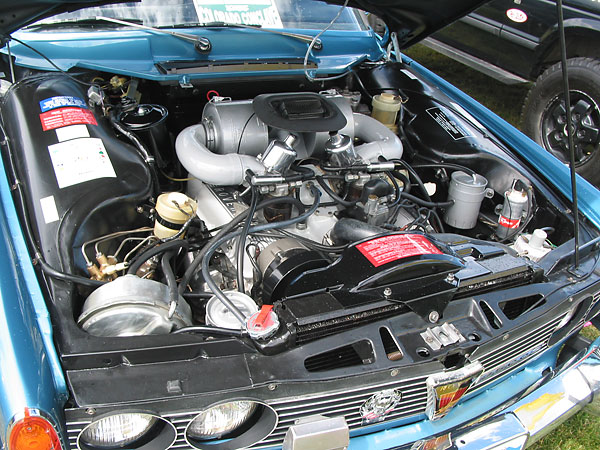
�
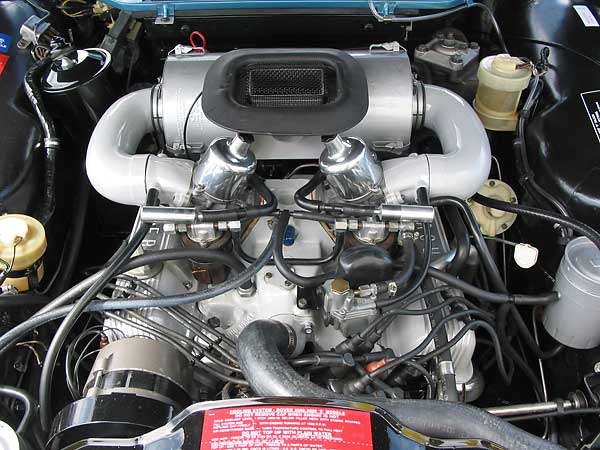
�
Twin 1.75" bore SU "HS6" carburetors.
�
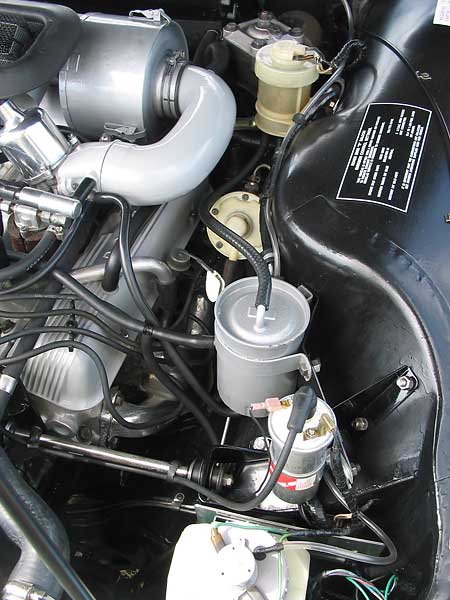
�
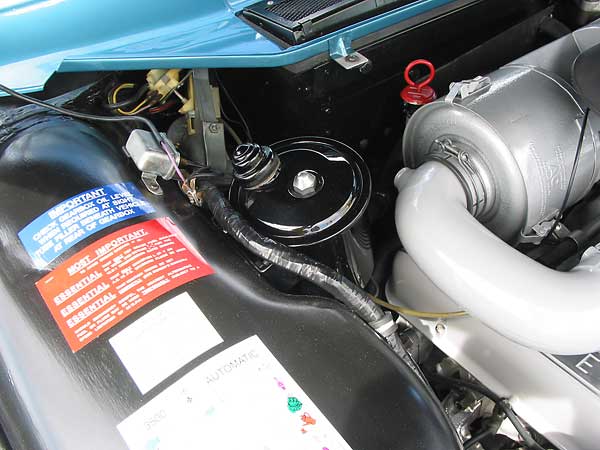
�
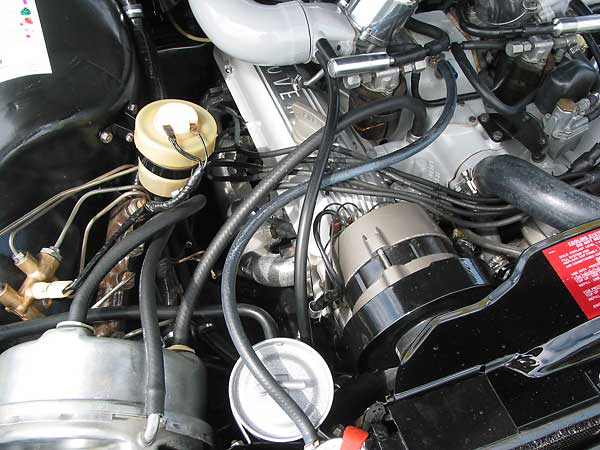
�
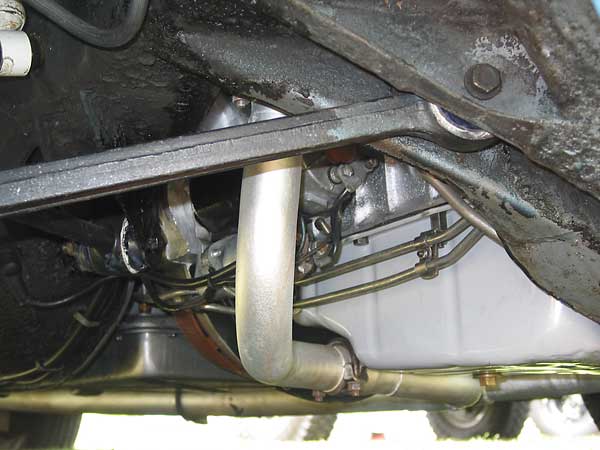
�
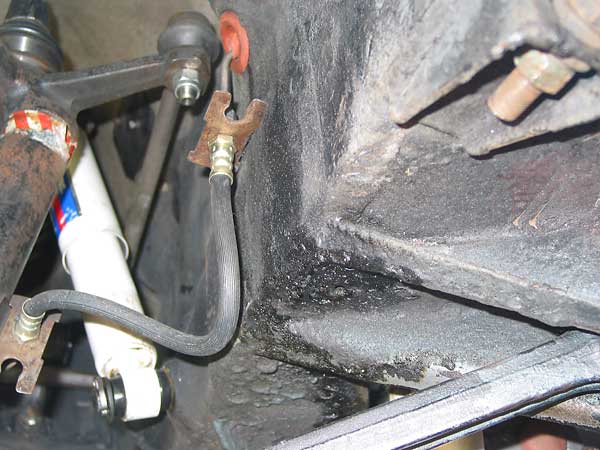
�
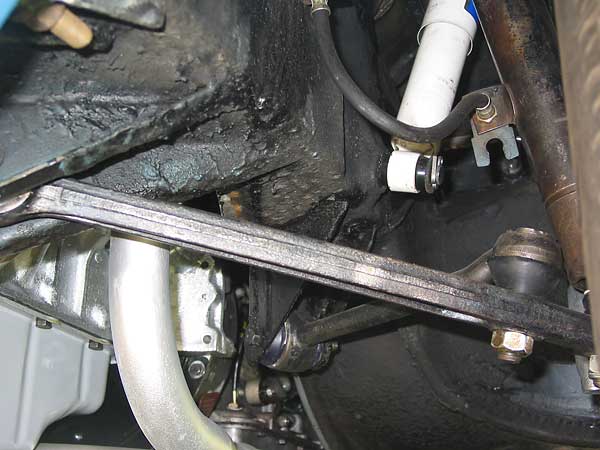
�
We don't have good pictures of it here, but the front suspension features coil springs that are mounted high up
�
behind the tires and actuated via bellcranks. At first glance, the telescoping shocks look conventional, but in fact
�
by virtue of their mounting, their function is reversed from normal - the shocks actually extend when a tire hits a
�
bump, which is a good thing because it eliminates binding and improves shock absorber life. The steering gear
�
and all steering linkage are behind the engine, and mounted high, so that in a front-end impact the steering wheel
�
won't normally be pushed rearward toward the driver. (Thus a collapsible steering column wasn't required for
�
Rover to comply with the Federal "USA Safety Act of 1966".) The front anti-sway bar is similarly tucked neatly away.
�
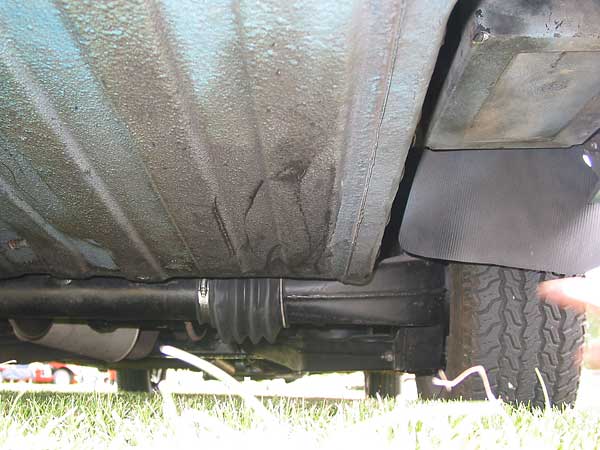
�
A "de Dion tube" keeps the two rear wheels absolutely parallel in all situations. Rover's de Dion tube is
�
unique though, because its two parts were designed to telescope and to rotate relative to each other.
�
In this picture you can see the accordian-pleated seal that protects the joint. You may just barely see
�
the oil-fill lug at mid-tube. Inside, the de Dion tube has bronze bushes lubricated with thick gear lube.
�
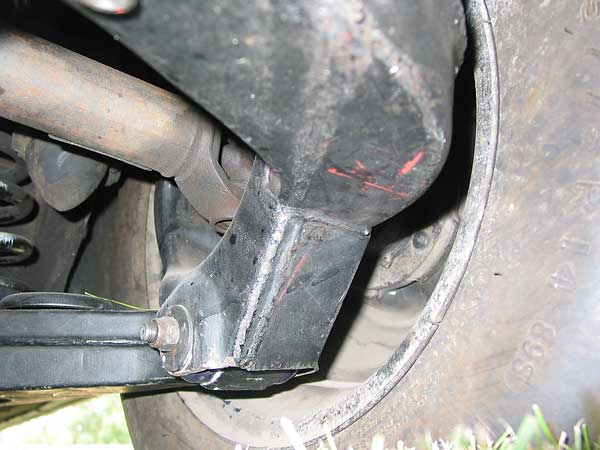
�
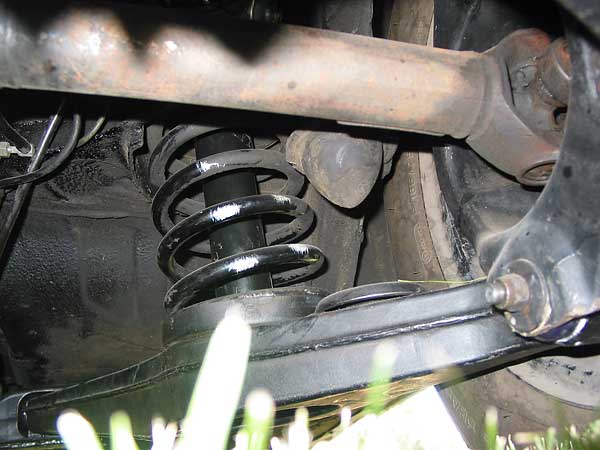
�
Unlike most independent rear suspensions, the half shafts are fixed-length.
�
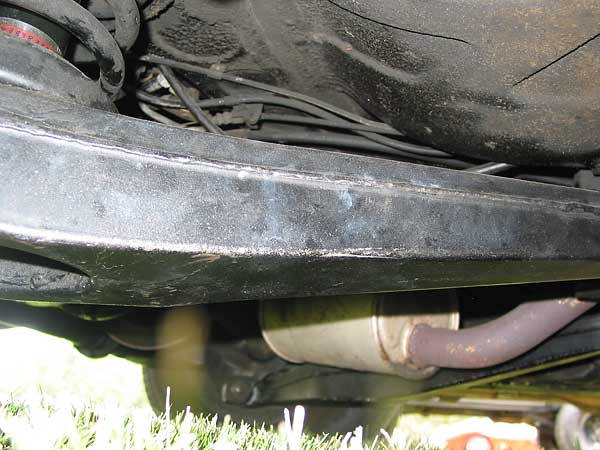
�
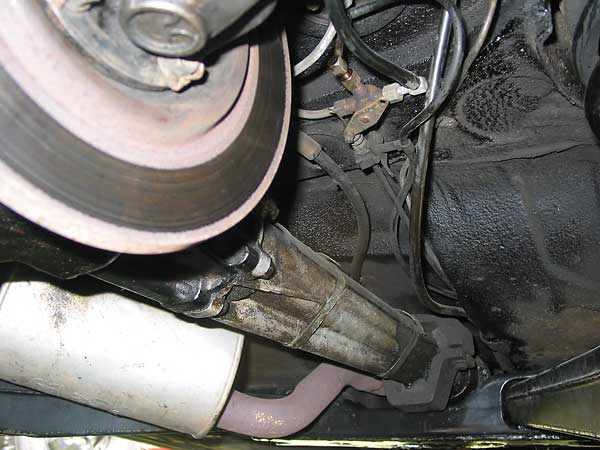
�
Obviously, the differential has a very long pinion section. Where it mounts to the chassis (with a rubber shock
�
mount) there's a harmonic-tuned weighted block to reduce vibration. In this view you can also see the cable
�
operated remotely-controlled valve that's used to access the "reserve capacity" of the fuel tank.
�
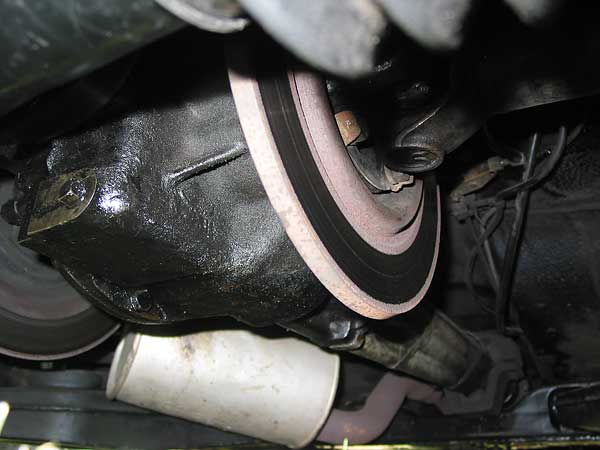
�
Inboard disc brakes reduce unsprung weight for improved ride quality.
�
�
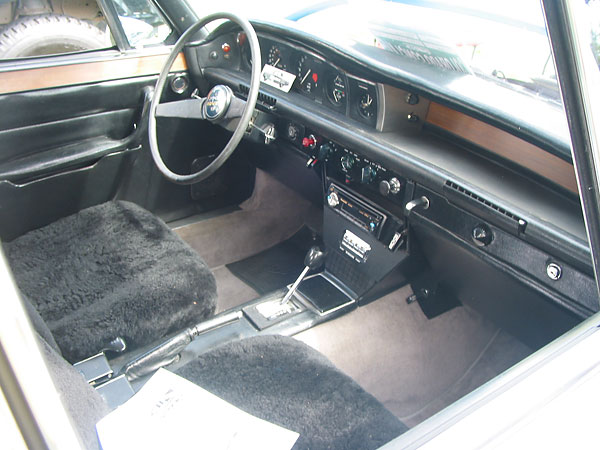
�
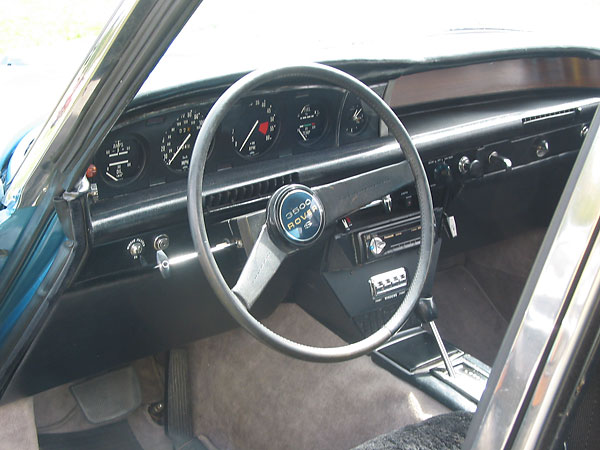
�
Knee bolsters on both driver and passenger side of the dashboard fold down to reveal glove boxes.
�
The driver side actually has two separate compartments, with room for the steering column between.
�
The fuse and relay center is easily accessible behind the passenger side knee bolster.
�
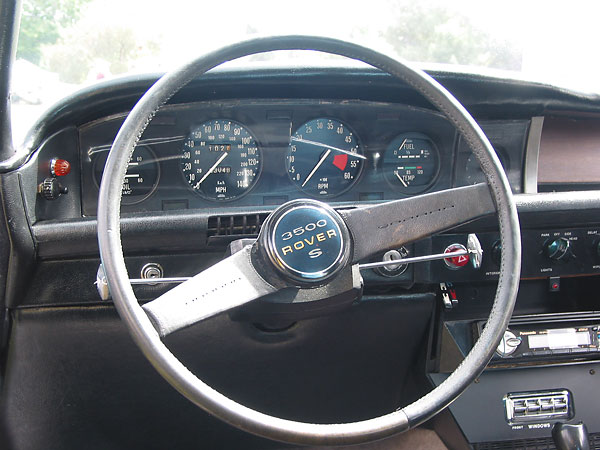
�
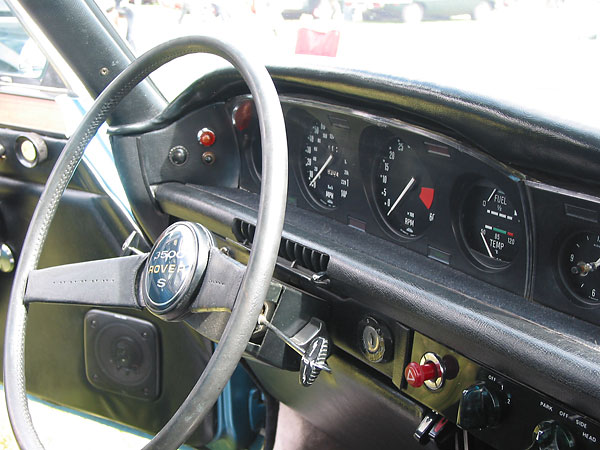
�
Looking through the steering wheel, in this view you can see the Icelert switches and warning lamp.
�
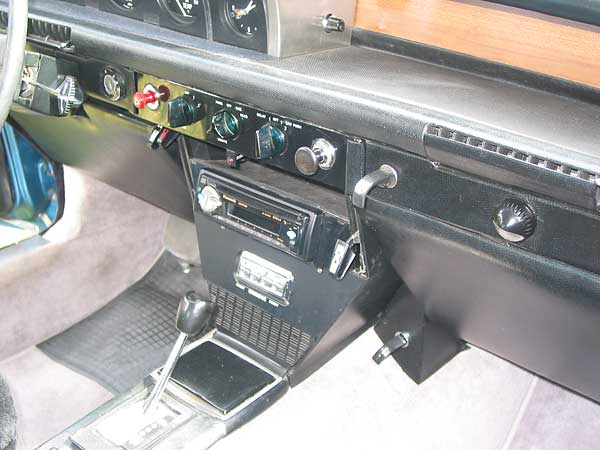
�
Low and to the right of the center console... the cable-operated remote-control for the reserve-fuel petcock.
�
Check out the transparent green illuminated dashboard knobs. Rolls Royces don't have this much quirky goodness!
�
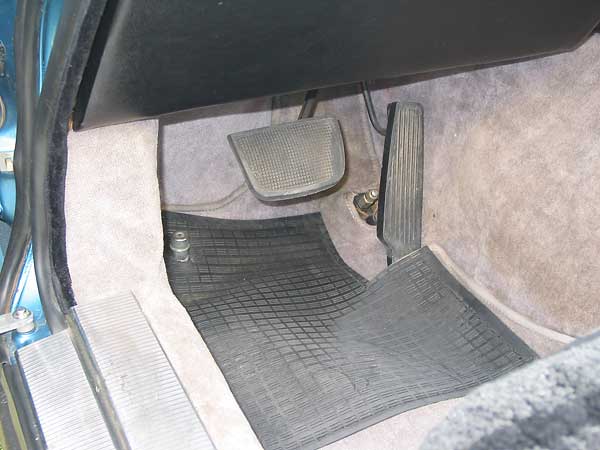
�
The vinyl-covered lower dashboard panels were constructed of honeycomb plastic to absorb energy in a crash.
�
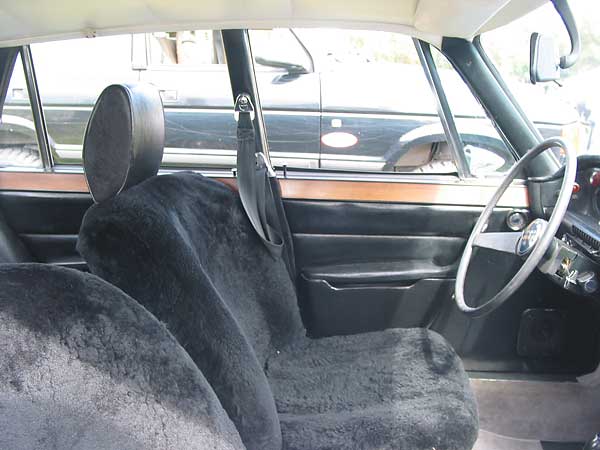
�
A lot of engineering went into Rover's headrests, which "cam" rearward in an accident to absorb energy.
�
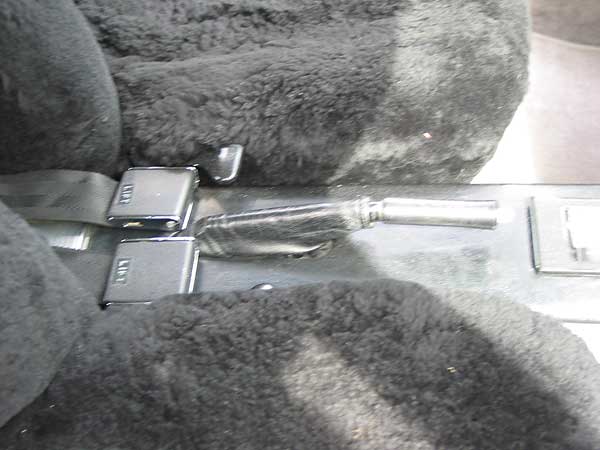
�
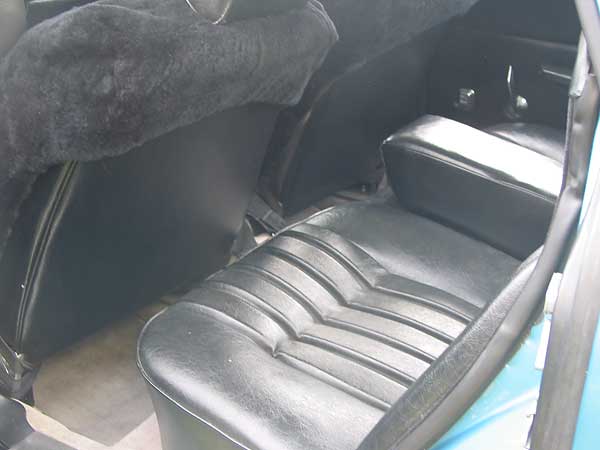
�
Rear bucket seats and a center arm rest make this a comfortable touring car for four.
�
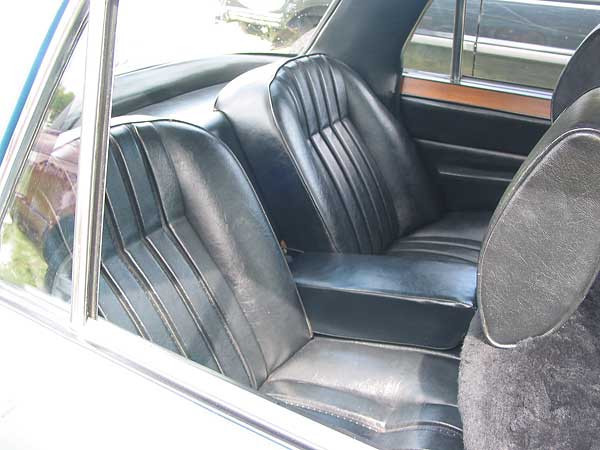
�
It's not really shown here, but all four seats were equipped with three-point seat belts.
�
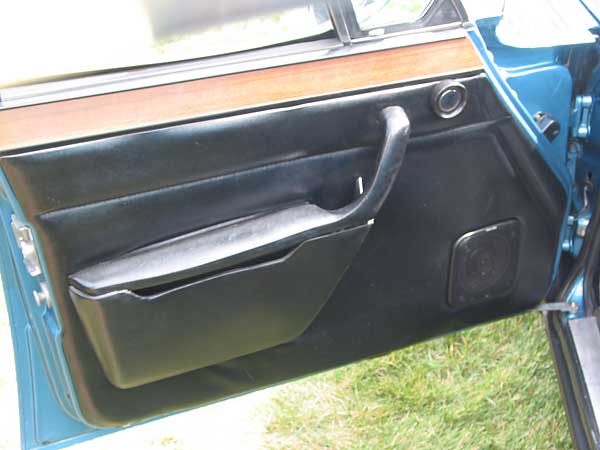
�
Rover provided generous, compartmentalized storage space. Door pockets neatly hide a paperback or maps.
�
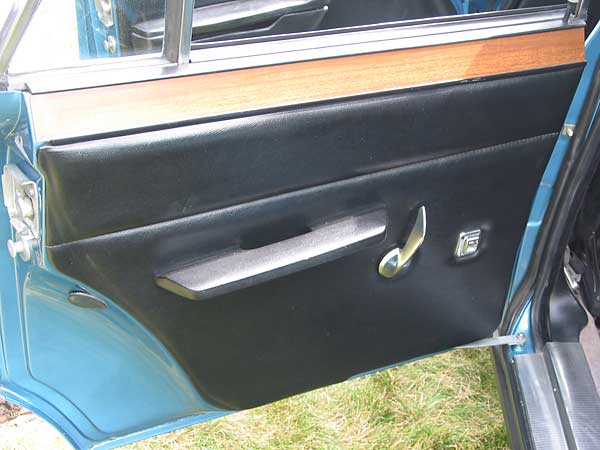
�
That's real wood veneer. Incidentally, Rover sourced their electric windows from GM's Delco division.
�
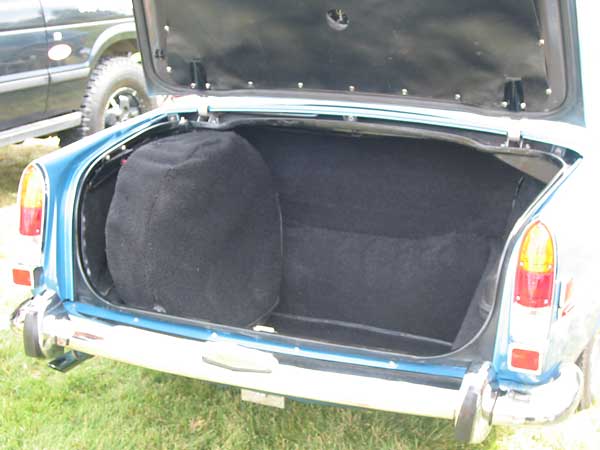
�
Rover placed the fuel tank over the differential to enhance rear-end crashworthiness.
�
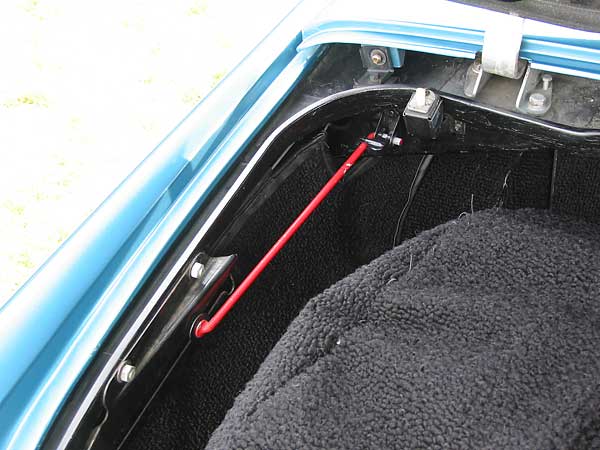
�
Torsion springs hold the trunk lid up, unless the spare tire is secured on top of the trunk-lid. The red
�
prop rod that's shown here can be used to hold up the trunk lid when the tire is stored outside.
�
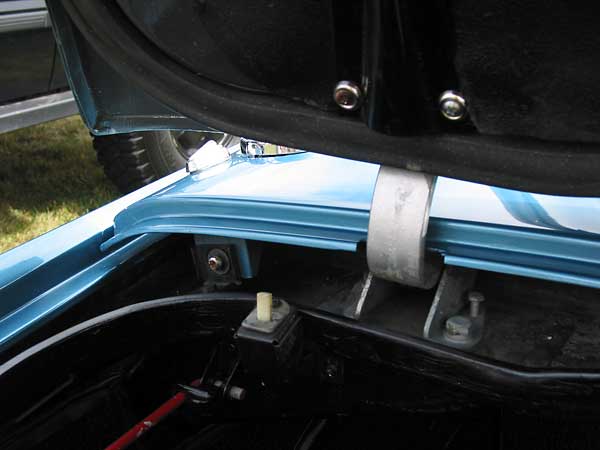
�
All the exterior body panels come off easily. They can be repaired or repainted off-the-car.
�
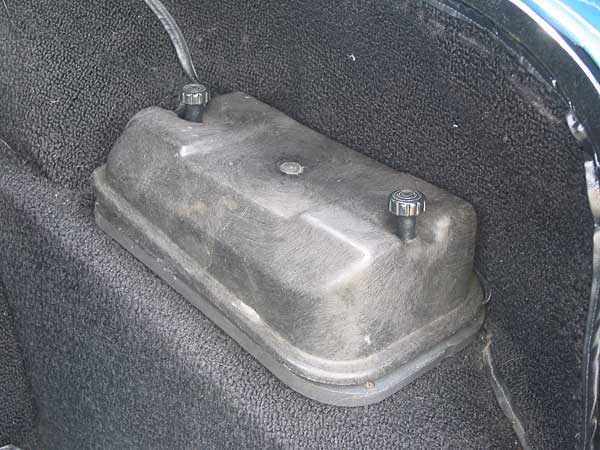
�
The trunk-mounted battery box seals up nicely.
�
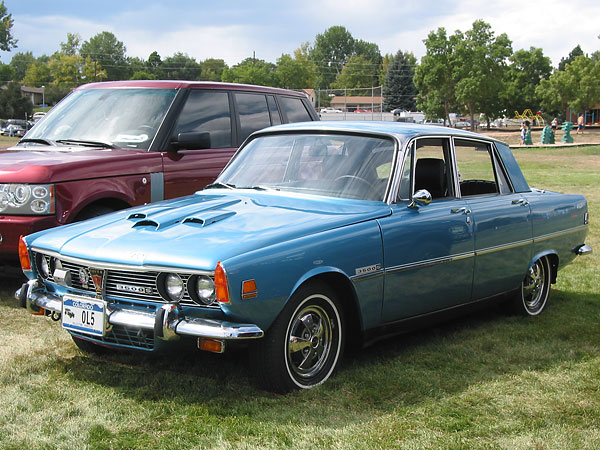
�
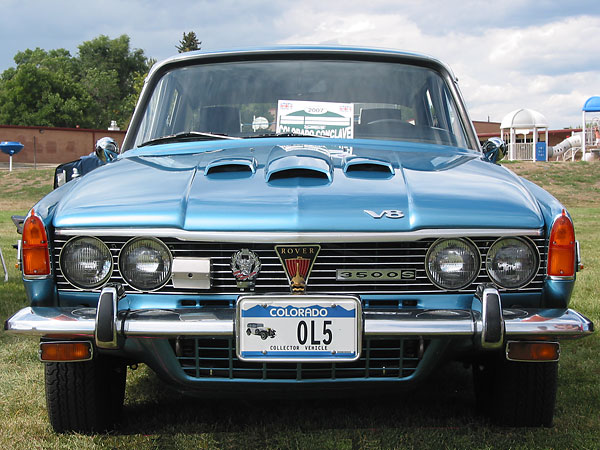
�
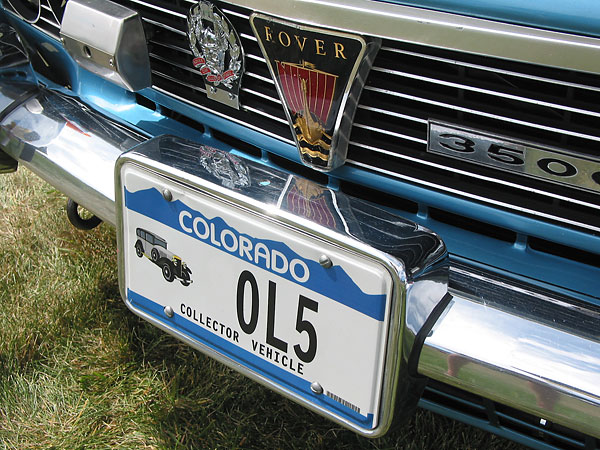
�
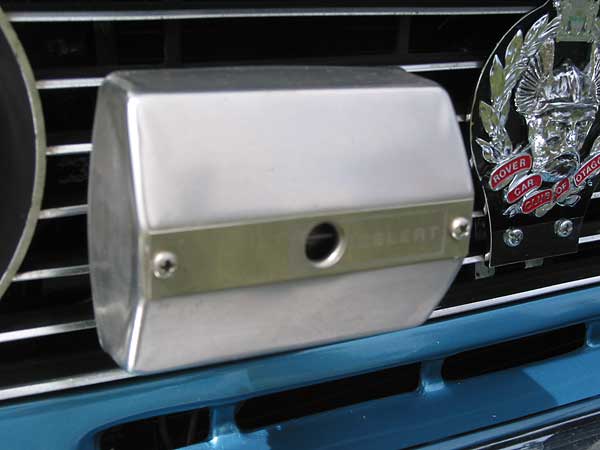
�
The Icelert sensor monitors humidity & temperature. (The alarm lamp and switch panel were shown above.)
�
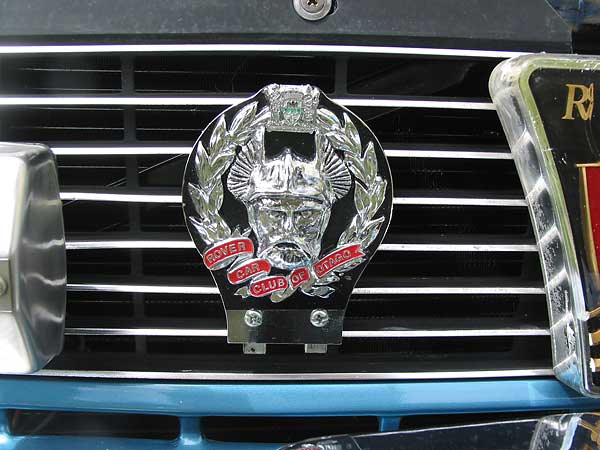
�
Rover Car Club of Otago, New Zealand insignia. Rover cars have a loyal worldwide following!
�
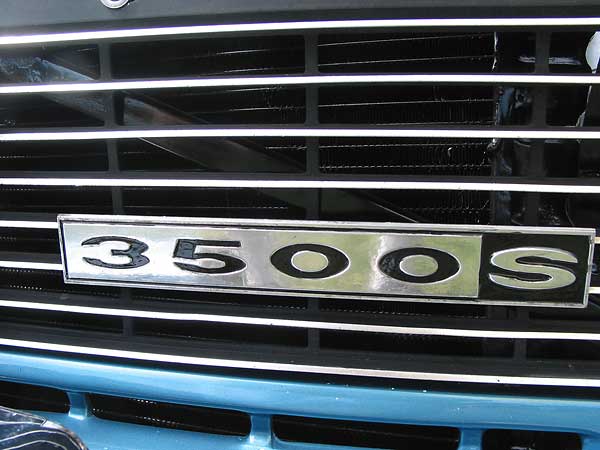
�
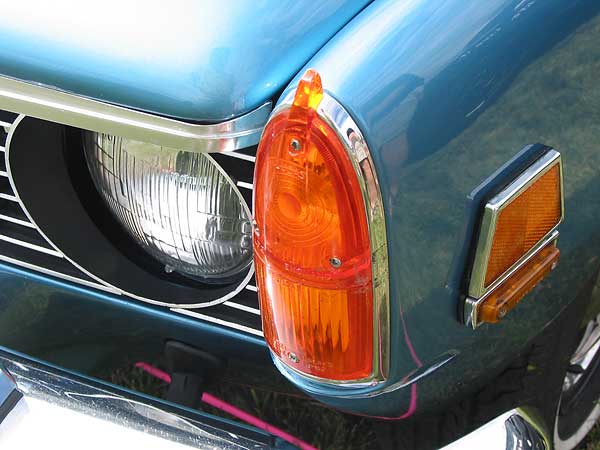
�
The lens extensions make parallel parking extra easy.
�
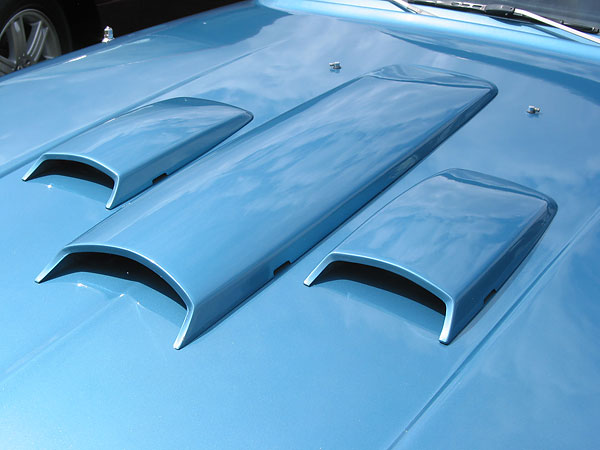
�
Distinctive triple hood scoops were unique to the North American version. The center one is gasketed to the
�
engine air cleaner. The two smaller scoops are for summer-season cooling. Rotate the valve for winter driving.
�
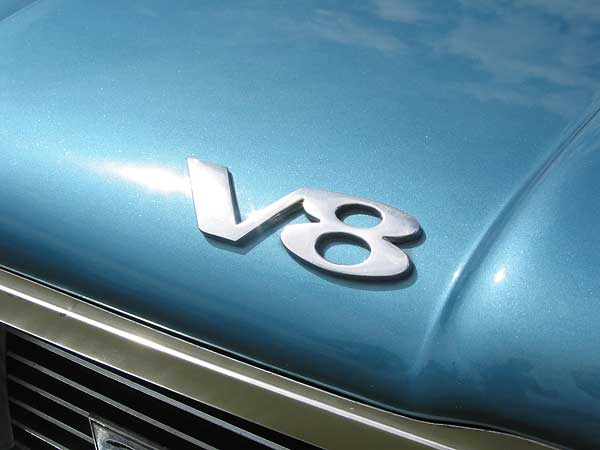
�
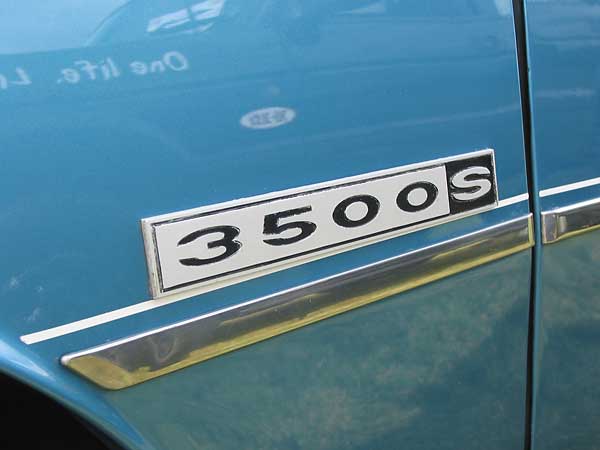
�
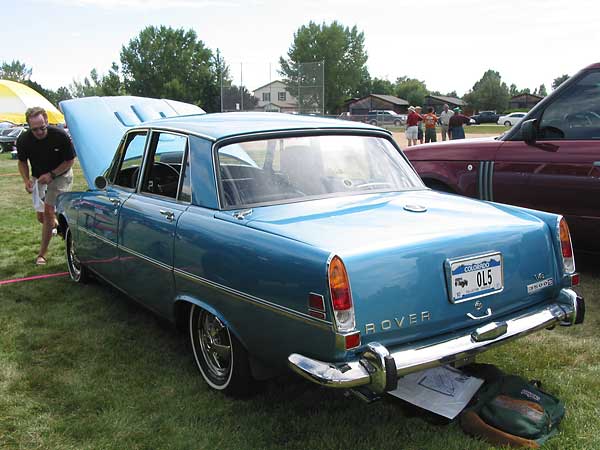
�
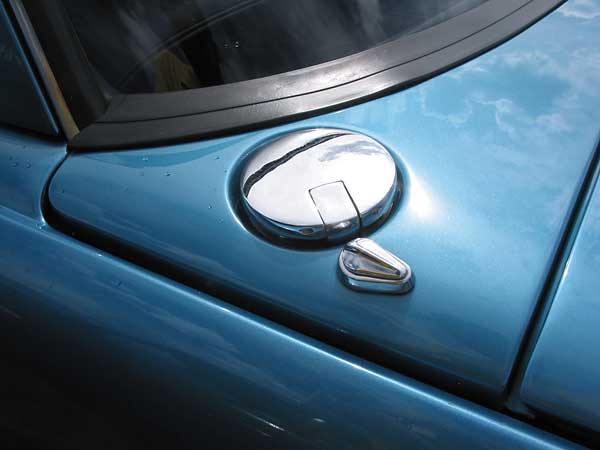
�
The Rover 3500S came standard with locking gas cap. A less obvious feature is that the rear-deck panel can be
�
removed very quickly with just a couple fasteners. Once removed, rubber clamps that secure the rear glass are
�
easily loosened. Remove the clamps, and the glass slides down and out! The windshield is mounted similarly.
�
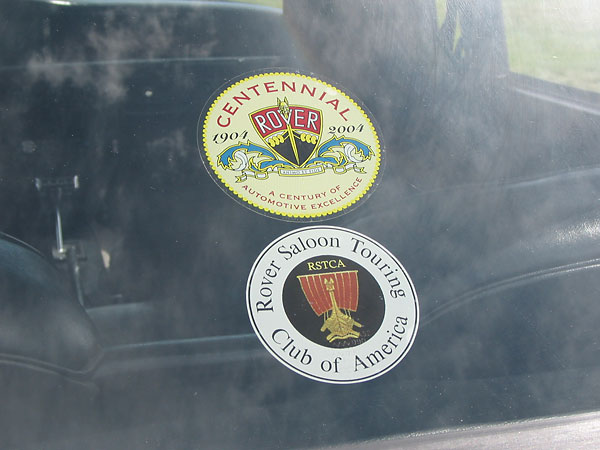
�
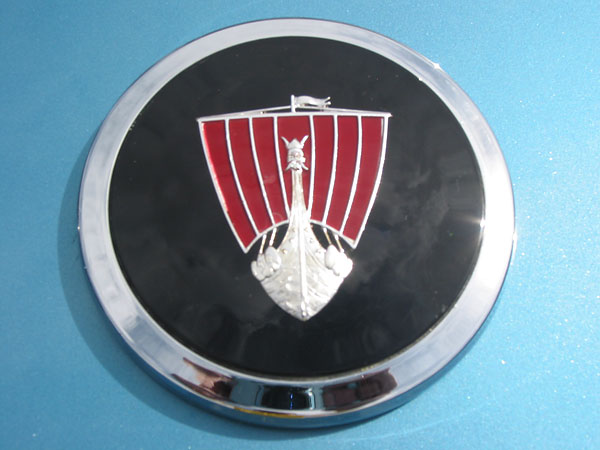
�
This trunk-lid badge is quickly removeable. The spare tire can be moved from inside the trunk to
�
the top of the trunk-lid where it mounts here on a special adapter - freeing-up extra luggage space!
�
�
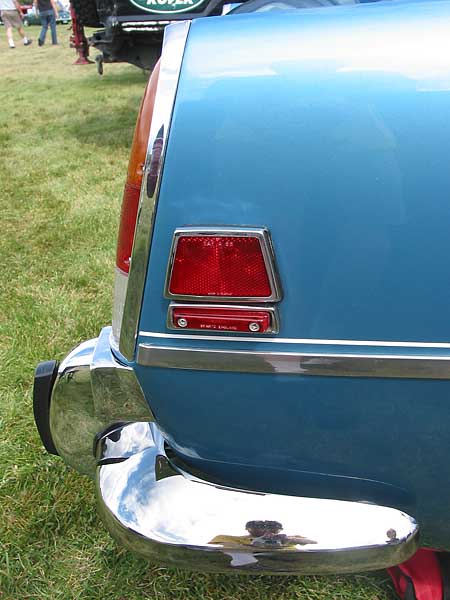
�
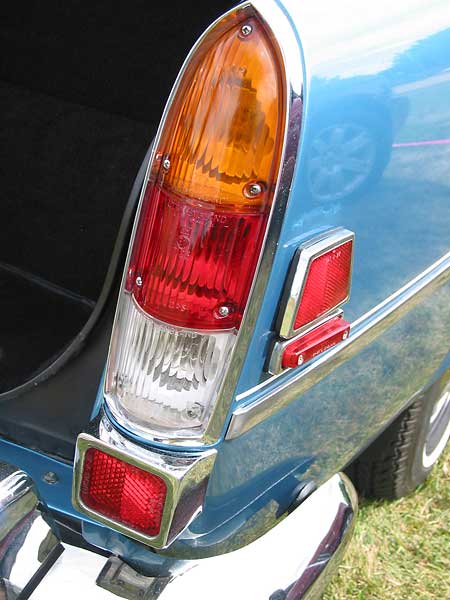
�
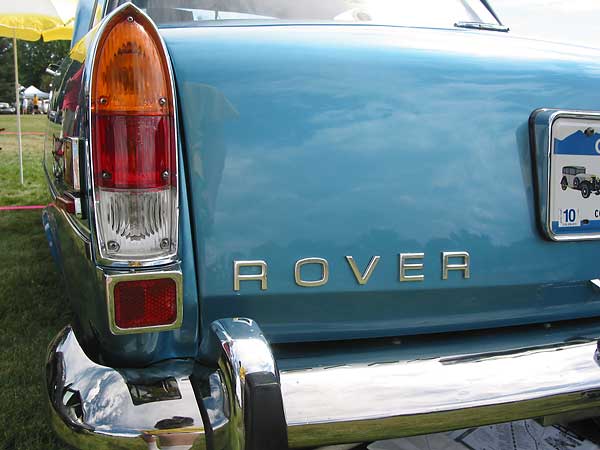
�
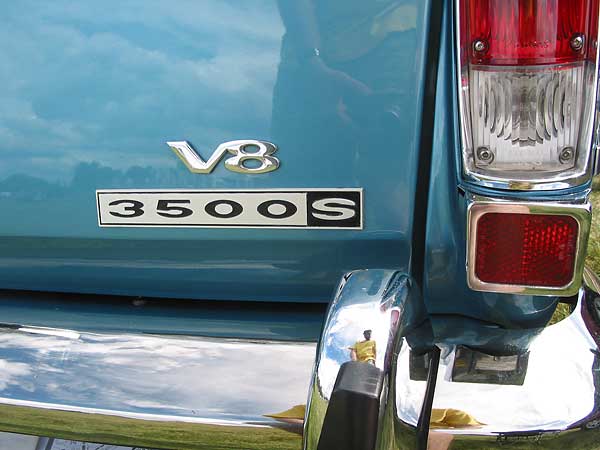
�
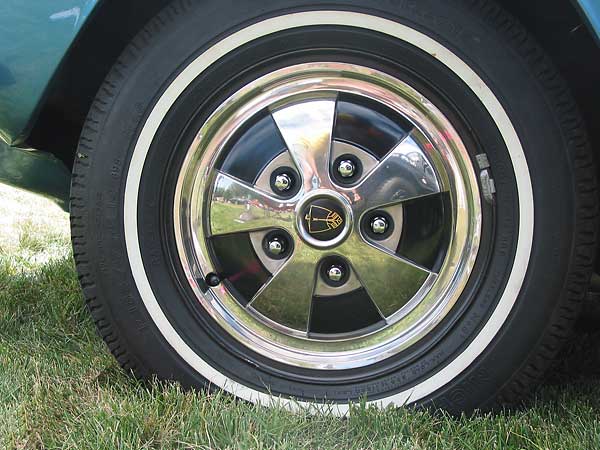
�
The Rover 3500S stainless steel hubcaps don't need to be removed for lugnut access.�
�
�
This article is part of a set of SIX! If you enjoyed this article, check out:
�
Rover 3500S Press Release (circa 1969)
�
1970 Rover 3500S Specifications and Pricing
�
Rover P6 Design Innovations
�
Rover V8 Engine History (courtesy of Autocar magazine)
�
Leyland "Eight GE" Concept Car Press Release (circa 1968)�
�
Photos by Curtis Jacobson. All rights reserved.�

